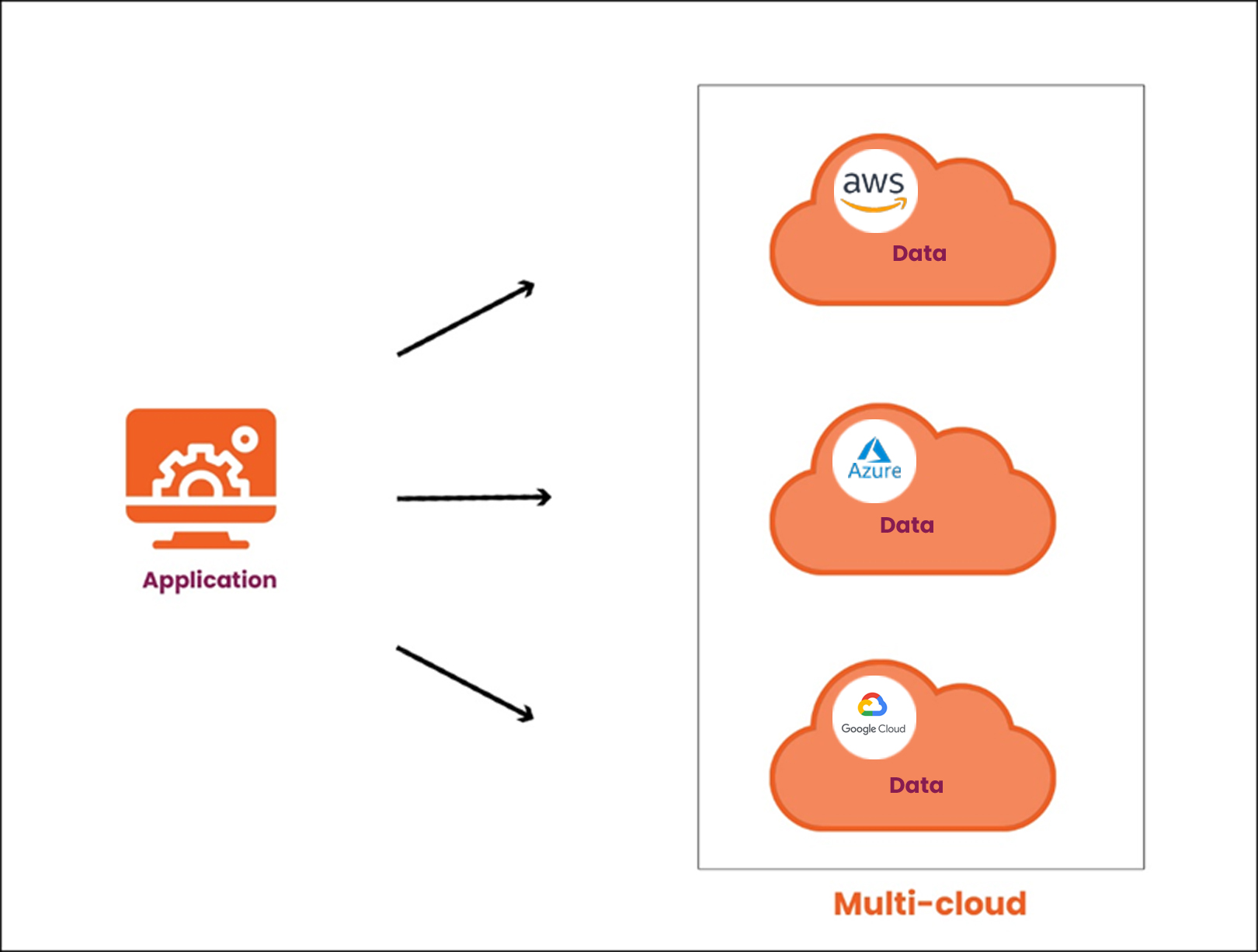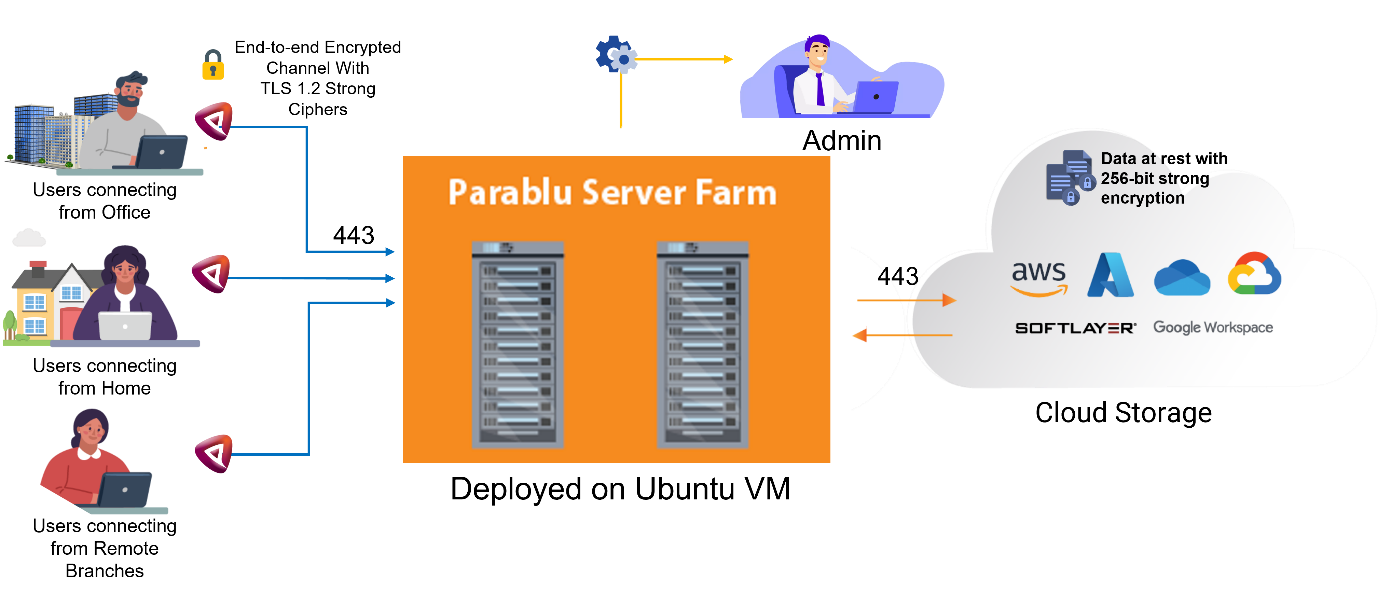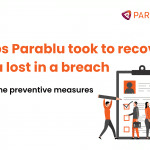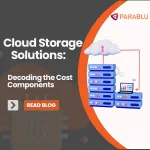What is Multi-cloud backup – Navigate to high Data Resiliency

What is a Multi-cloud backup strategy?
To avoid putting eggs (data) in a single basket that could be corrupted beyond recovery, cybersecurity experts adhere to the multi-cloud approach. The anytime-anywhere, quick data access demand posed by remote workspaces has also led to wide multi-cloud adoption to avoid deadlocks.
A multi-cloud backup strategy may help in redundancy, but the measure alone is insufficient to prevent data losses caused by cyber-attack forms such as ransomware. In addition, adherence to a multi-cloud environment alone with inadequate data protection measures could lead to heavy penalties during regulatory inspections.

Hybrid Vs Multi-Cloud Backup Strategy

Parablu’s Hybrid Cloud Backup Solution

- Policy Based Management
The BluVault helps define data management policies from a user-friendly console effortlessly, eliminating manual intervention.
- Network Bandwidth Optimization
Data backup activities often consume significant enterprise bandwidth. Equipped with an exclusive CPU throttling feature, BluVault ensures data transfer activities impact business continuity the least.
- Enterprise Audit Trail
Data backup activities must be regulatorily compliant to prevent heavy penalties and other reputational implications. A BluVault integration means a comprehensive view of all enterprise data protection exercises, fetched through the product’s user-friendly dashboard. The extracted reports can be shared readily with auditors.
“Parablu’s BluVault harnesses the cloud without an enterprise having to invest in a full-fledged SaaS offering. “
- De-Duplication and Compression
BluVault optimally utilizes the storage spaces in existing cloud subscriptions by compressing data, making it highly advantageous from an enterprise scalability perspective.
- Delegated Administration
The various enterprise data management activities can be delegated to a set of administrators based on parameters such as departments, designations, and so on. Based on Segregation of Duties paradigm (SOD), the practice prevents an administrator assigned to a particular task from interfering with another.
Pros and cons of Multi-cloud data strategy
There are advantages and disadvantages to a multi-cloud strategy. We shall not delve into details of overarching business and infrastructure decisions. Instead, we shall focus on the data security aspects of multi-clouds.
- Data Privacy
To an extent, cloud backup solutions may assure data safety but not exclusive privacy. Subscribers are not aware of the encryption practices adopted by cloud vendors and do not receive an exclusive encryption key. To draw a parallel, the experience is like storing your belongings in a bank vault but not owning an exclusive key to restrict access to your belongings.
- Increased management difficulty
A multi-cloud data backup approach is opted for by many enterprises for better data protection, especially the prevention of on-premises archival. However, storing data across multiple cloud models complicates data security since management challenges are increased manifold.
- More complicated cybersecurity
Relying on multiple cloud subscriptions means dabbling between the security configurations of various cloud models which could be an additional task for already overburdened cybersecurity teams. Considering cloud vulnerability to ransomware, insider threats, and other cyberattack forms, more subscriptions mean multiple vectors of attacks.
- Costs
Multi-cloud data backup spirals cloud subscription expenses especially while managing data scalability. Despite creating redundant copies across models, the multi-cloud approach does not guarantee protection from ransomware and insider threats. Hence enterprises may have to re-consider this approach.
“More cloud subscriptions with little data security measures means a larger ransomware attack surface. “
- Scalability
Data scalability can be seamlessly managed with the availability of multiple cloud subscriptions. Pay-as-you-go subscriptions ensure ready storage space availability to accommodate the growing data enormity.
- Increased resilience
A multi-cloud environment means an N+1 or N+2 resilience privilege and rapid failover during outage instances.
- High Availability
Storing redundant data copies across various cloud subscriptions ensures data is readily available to every employee with no deadlocks or bottlenecks.
“A multi-cloud environment means an N+1 or N+2 resilience privilege and rapid failover during outage instances. “
Recommended best practices to data across multiple clouds
- Consolidate the cloud backup vendors
The fragmentation caused by relying on multiple backup vendors could lead to data silos and instances of failed Service Level Agreements (SLA). The practice only makes an enterprise more susceptible to ransomware and insider threats. Consolidation of cloud backup vendors could be a leap forward in achieving better data protection.
- Eliminate Data Silos
Data silos could be a ticking time bomb that could adversely affect business productivity. Keeping redundant copies of standalone relational databases and other data forms on multiple storage locations presents several disadvantages. A prominent one is updating one location and missing out on the other.
- Creating Data Lakes
The best resolve to eliminate silos is to create data lakes that hold structured, unstructured, and semi-structured content in blob storage options. S3 buckets, Azure blob storage, and Google cloud storage can be leveraged for this purpose.
- Centralize data operations in the cloud
Centralization of data operations and leveraging features such as eDiscovery and cloud disaster recovery could make enterprises more intelligent and resilient.
- Build data resiliency across the board
Be it on-prem, or multiple clouds, take an integrated approach to manage the data protection lifecycle including incident management, and quick data recovery. To accomplish this, implement a new-age data resiliency solution that ensures efficient and robust data protection techniques, provides autonomous encryption keys, has rapid recovery, easy data management across users/endpoints with a simple administration interface. Of course, be sure that it gives you audit-ready reports while meeting global cross-industry regulations.
The BluVault Hybrid-Cloud Advantage
BluVault eliminates shunning pre-existing on-premises infrastructure and helps balance workloads across cloud and local servers. The product offers zero-knowledge privacy, does not incur additional storage costs, and is cloud-agnostic.
BluVault is cloud agnostic and can seamlessly utilize myriad platforms such as AWS, GCP, IBM SoftLayer, and others as storage targets in pure cloud and hybrid scenarios. BluVault is highly optimized to support on-prem and Microsoft 365 in Azure/OneDrive.





